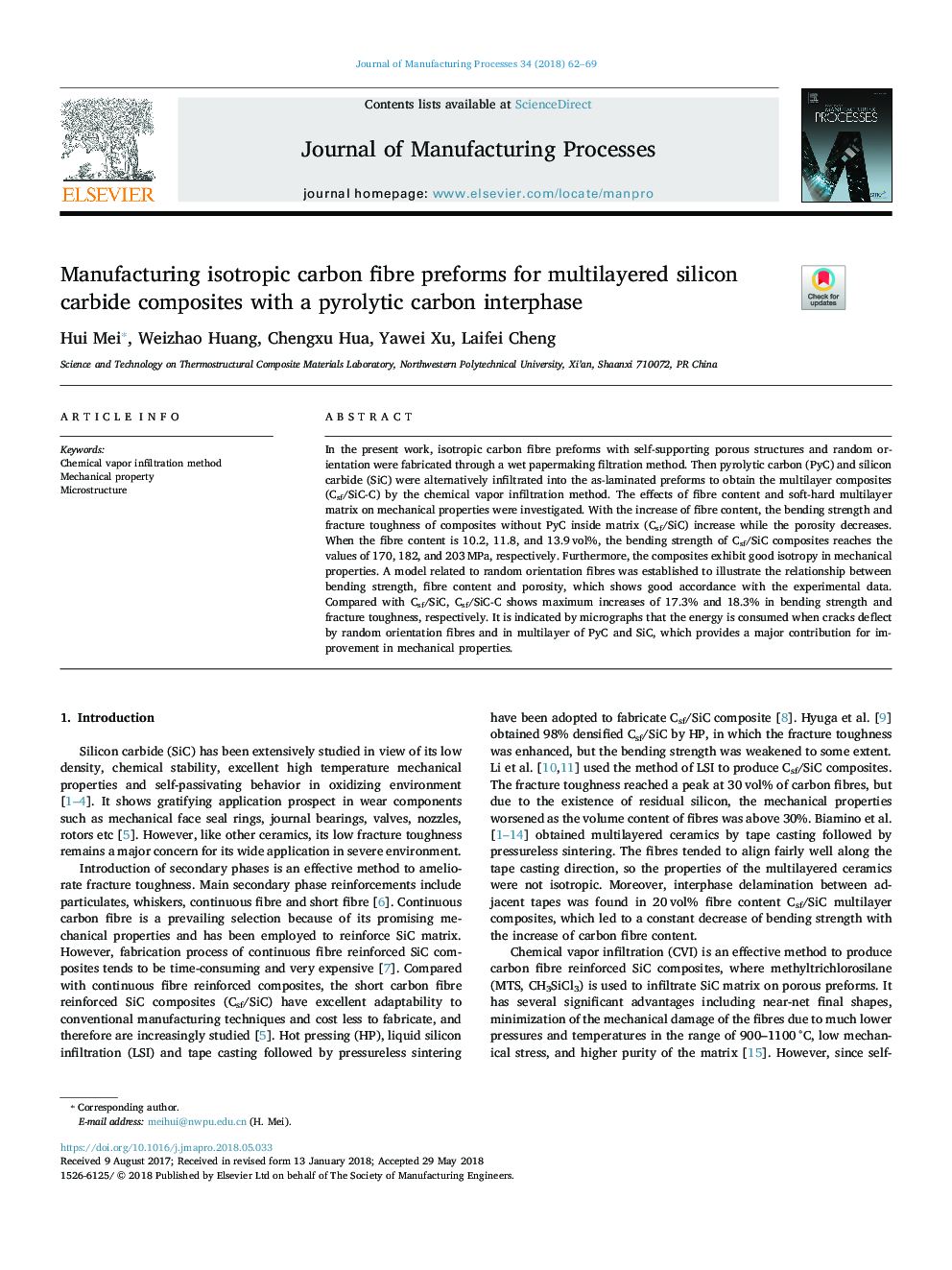| Article ID | Journal | Published Year | Pages | File Type |
|---|---|---|---|---|
| 8047843 | Journal of Manufacturing Processes | 2018 | 8 Pages |
Abstract
In the present work, isotropic carbon fibre preforms with self-supporting porous structures and random orientation were fabricated through a wet papermaking filtration method. Then pyrolytic carbon (PyC) and silicon carbide (SiC) were alternatively infiltrated into the as-laminated preforms to obtain the multilayer composites (Csf/SiC-C) by the chemical vapor infiltration method. The effects of fibre content and soft-hard multilayer matrix on mechanical properties were investigated. With the increase of fibre content, the bending strength and fracture toughness of composites without PyC inside matrix (Csf/SiC) increase while the porosity decreases. When the fibre content is 10.2, 11.8, and 13.9â¯vol%, the bending strength of Csf/SiC composites reaches the values of 170, 182, and 203â¯MPa, respectively. Furthermore, the composites exhibit good isotropy in mechanical properties. A model related to random orientation fibres was established to illustrate the relationship between bending strength, fibre content and porosity, which shows good accordance with the experimental data. Compared with Csf/SiC, Csf/SiC-C shows maximum increases of 17.3% and 18.3% in bending strength and fracture toughness, respectively. It is indicated by micrographs that the energy is consumed when cracks deflect by random orientation fibres and in multilayer of PyC and SiC, which provides a major contribution for improvement in mechanical properties.
Keywords
Related Topics
Physical Sciences and Engineering
Engineering
Industrial and Manufacturing Engineering
Authors
Hui Mei, Weizhao Huang, Chengxu Hua, Yawei Xu, Laifei Cheng,
